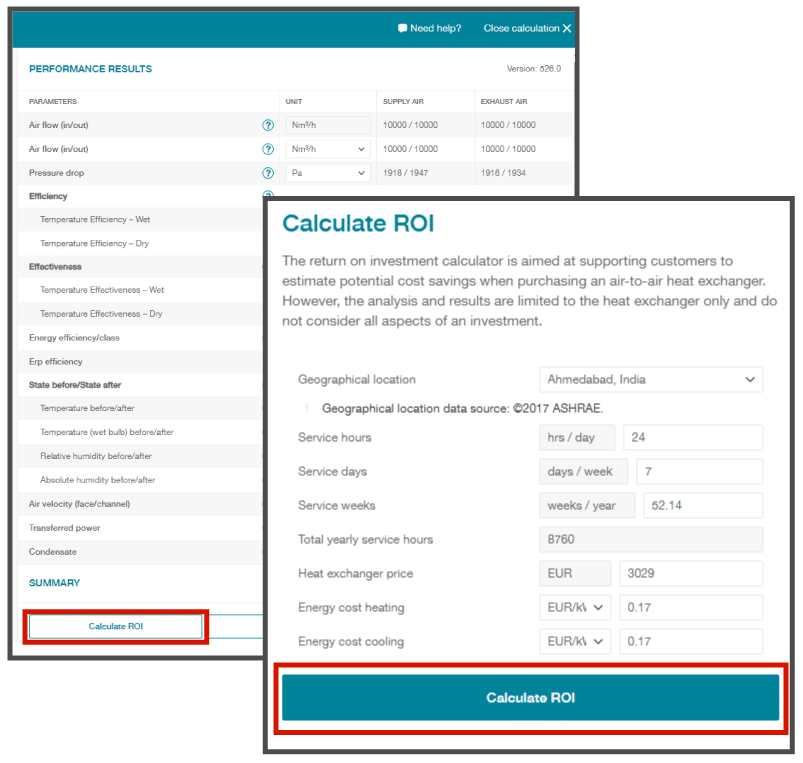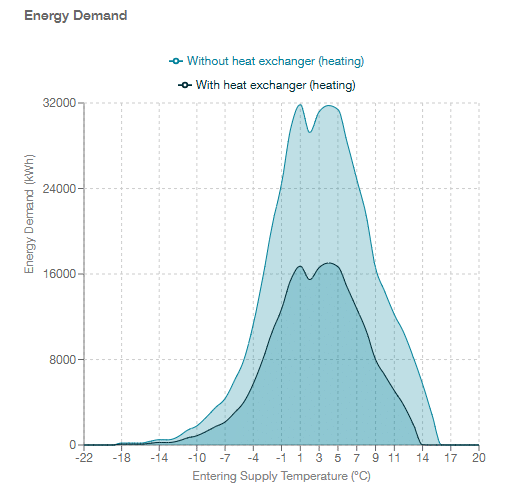Why Heat and Energy Recovery?
By recovering heat, energy consumption is reduced. Saved energy cut costs and the consumption of coal, natural gas, and other fossil fuels, eventually reducing carbon dioxide.

Return on Investment & CO2 Emissions
The ventilation of buildings significantly adds to the total amount of heat loss. However, constant air exchange is required to introduce fresh air to maintain a comfortable and healthy indoor climate. The heat loss can be reduced when the heat from the exhaust air is transferred to the supply air.
Whereas the savings in commercial and residential ventilation applications might be easier to grasp, industrial ventilation applications also offer many ways to profit from otherwise wasted heat. Consequently, a heat exchanger is almost always a beneficial investment – regardless of whether the exchanger is a rotary or a plate heat exchanger.
All our models save sufficient energy to provide short amortization periods and valuable savings.
In Heatex Select Online, you will find a Return on Investment Calculator that provides an approximate indication of the payback period, amount saved, and energy saved by installing a Heatex air-to-air heat exchanger. This Calculator is exclusively available in Heatex Select Online.
Additionally, in Heatex Select Online, you can view the CO₂ emissions for any given product configuration, providing clearer insight into the environmental impact of each model, based on material choices, production processes, and transportation methods.
The generated CO₂ emissions are automatically calculated, including 1,000 km of truck transport.
Calculate Return On Investment
In Heatex Select Online, the return on investment calculator becomes available once you have calculated the performance results for a specific product configuration.
Follow the steps below to calculate the ROI for a rotary or plate heat exchanger.
- Go to Heatex Select Online
- Select Rotary or Plate Heat Exchangers
- Enter your Air Data and Product Configuration
- Click Calculate
- Click Calculate ROI
- Enter the Geographical Location
- Change any data necessary
- Click Calculate ROI
- Click Include in PDF (optional)
- Click Export PDF (optional)

The ROI Results
Key results are the Total yearly energy reduction, Yearly Savings, and the Payback Period.
You will also find an estimation of CO₂ emission reduction based on the energy saved by the heat exchanger.
Under Installed Heating/Cooling Power, we compare the required heating and cooling coil capacities. Under Energy Usage, we compare annual energy demand with and without an air-to-air heat exchanger.
The corresponding graphs visually support the numbers, making it easier to understand the results.
Note that the heat exchanger price is required to calculate payback time. Otherwise, the result is limited to energy savings only.
The heat exchanger price can also be considered the total investment cost; thus, payback is calculated for the entire system.

Carbon Dioxide Emissions & Reduction
The combustion of fossil fuels contributes to the increasing amount of CO₂ in the atmosphere. Higher concentrations of CO₂ in the atmosphere contribute to the greenhouse effect, increasing the average temperature on Earth. Heatex’s contribution to reducing heat loss through crossflow and rotary heat exchangers totals approximately. 7.000.000 tons CO₂ / year.
It goes without saying that the production and transport of the heat exchanger itself generate some CO₂ emissions. The emissions generated by a specific product configuration are visible in Heatex Select Online for both rotary and plate heat exchangers. Bottom line is, it saves more CO₂ emissions than it creates when configured, installed, and maintained correctly.
Total CO2 reduction by the installed base of Heatex rotary heat exchangers:
| Saved energy per year per RHE* | Approx. 250 000 kWh/ year |
| Months per year in operation | 6 months/ year |
| Estimated lifetime | 10 years |
| Recovered heat power (ErP 73%) | Approx. 57 kW |
| EU member states (28) average of CO2 equivalent pollution from electricity consumption | Approx. 300 g CO2/ kWh |
| CO2 – reduction/year/RHE | Approx. 73 000 kg/ year/ RHE |
| Total CO2 -reduction | Approx. 2 000 000 metric tons CO2/ year |
* Model E, wheel diameter: 1500 mm, well height: 2 mm, width: 200 mm.
Total CO2 reduction by the installed base of Heatex plate heat exchangers:
| Saved energy per year per PHE* | Approx. 82 000 kWh/ year |
| Months per year in operation | 6 months/ year |
| Estimated lifetime | 10 years |
| Recovered heat power (ErP 73%) | Approx. 19 kW |
| EU member states (28) average of CO2 equivalent pollution from electricity consumption |
Approx. 300 g CO2/ kWh |
| CO2 – reduction/year/PHE | Approx. 24 000 kg/ year/ PHE |
| Total CO2 – reduction | Approx. 5 000 000 metric tons CO2/ year |
* Model H2, plate size: 750 mm, well height: 2,1 mm, width: 718 mm.
